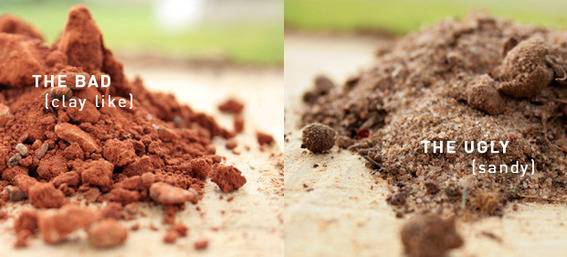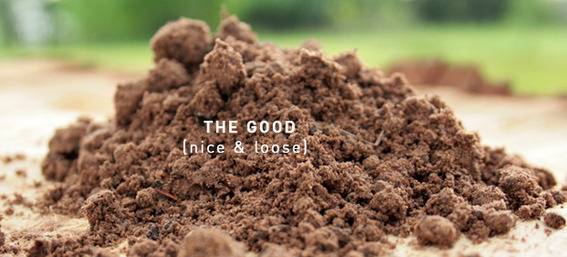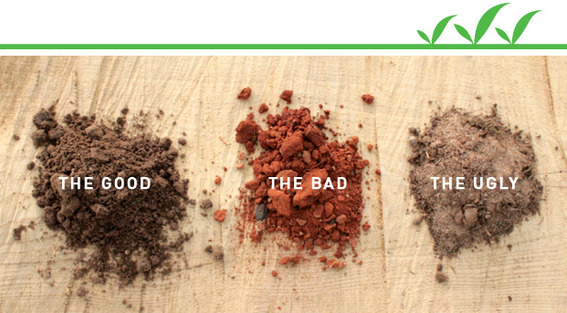Okay, would-be gardeners, let’s talk soil. So many garden failures can be attributed to bad soil. It’s like the wild west outlaw that comes in and steals all the good things from your plants. Good soil, on the other hand is like that wholesome wild west sherif who nurtures and cares for your plants. The white hat guy. Good vs. bad, get it?!
Anyway, the keys to good soil are:
nutrients, aeration, and volume.
Nutrients come in many ways, fertilizers are a synthetic nutrient additive, you can also add nutrients by composting. The more organic material you have in your soil, the more nutrients you’ll have. Nutrients give good soil it’s rich dark color, so if your soil is very sandy, or very red, or black from clay. You’ll want to add organic compounds to your soil. For many this is as easy as dumping your grass clippings into your garden plot and tilling them in. These will break down and add nutrients, you can also add fireplace ash and all the leftover veggies from the kitchen, like onion peels, and apple cores. Even your egg shells work great.

Aeration can only be described as the looseness or texture of the soil. How easily does it break apart, or how easily can you dig in it. Plants have to work their roots into the ground in order to access the nutrients you’ve placed there for them. The easier you can make it for your plants to put down roots the quicker and easier they’ll grow. You can help your soil out by adding peat moss, pecan shells, or peanut husks, or even a little sand. For those really clay based soils which will often be red or black in color and have a very dense consistency, like clay. Break up the soil, then add one of the above mentioned items, till it in, and then repeat every couple of months until you start seeing a nice texture in your soils.

Lastly volume, many gardeners don’t deal with volume because often times its not an issue. Volume is how much soil you need. So many times we are just treating the top 6-8 inches of our gardens. This isn’t enough, our plants need room to grow, and if we don’t give it to them they won’t really reach down into the soil and make the most of what’s there. So my recommendation is 2 cubic feet per plant. Now some plants can be grown closer together than a foot, but that just means that their root structure goes down not out. So provide a good 12-18 inches of soil depth for your plants. Believe me you’ll see the difference in your first year.
From the Farm 


This was my second summer in this house and the yard has been a big disapointment. I have two 300 year old trees at the bottom of the yard and I think they are sending tiny little roots all over my yard. In the early spring a bed that my husband had dug for me as well as putting the soil through a big sieve was surprisingly hard for me to dig when I wanted to put plants or shrubs in. I put trumpet vines (3) against a trellis the first year but even after this second summer one grew to be about 5 feet high and two fee wide while the other two were only two feet and one foot high. I have nasturtiums that are 3 inches high, snap dragons half the height they should be and hostas that are about one tenth the size that I had in my last yard. I took a fern that was living a terrible life, (or so I thought) from under a hedge in the front street and put it in my yard and now it looks like someone cut the ends of it besides that it is very small. My soil looks very grey and dries out very fast. What do you think is the main problem here? Loraine
Loraine,
Soil, sounds like a soil problem.
I would get the soil tested. Usually you can get a free soil test through your local Ag extension of you’re state college Ag network.
That will start to tell you how to feed the soil and feed you’re plants. If you have the time you can develop the soil slowly be adding compost and specific fertilizer mixes to develop the soil. This could take a couple of years.
If you want something faster, it will be more costly, but you can replace the soil in a specific area. You can dig out the flower beds and bring in specific hot mix soils for flower beds and plants.
That’s where I would start. Otherwise it’s going to take time for any plants to get going and develop because they are going to have to put down extensive root systems in order to get the nutrients they need to live. This is probably why the trees are running out extra feeder roots close to the surface.
Hope this helps! – Cale
Thanks so much for your answer, Cale. I have dug all around a few shrubs that I put in two years ago and replaced the old soil with some really good soil that I bought. Hopefully that will help a bit. I live in Vancouver, Canada so gardening is kind of ending now until next spring. I think I will get some new soil
in the spring and put it in my beds. Thanks again, Loraine Cassidy
great tips